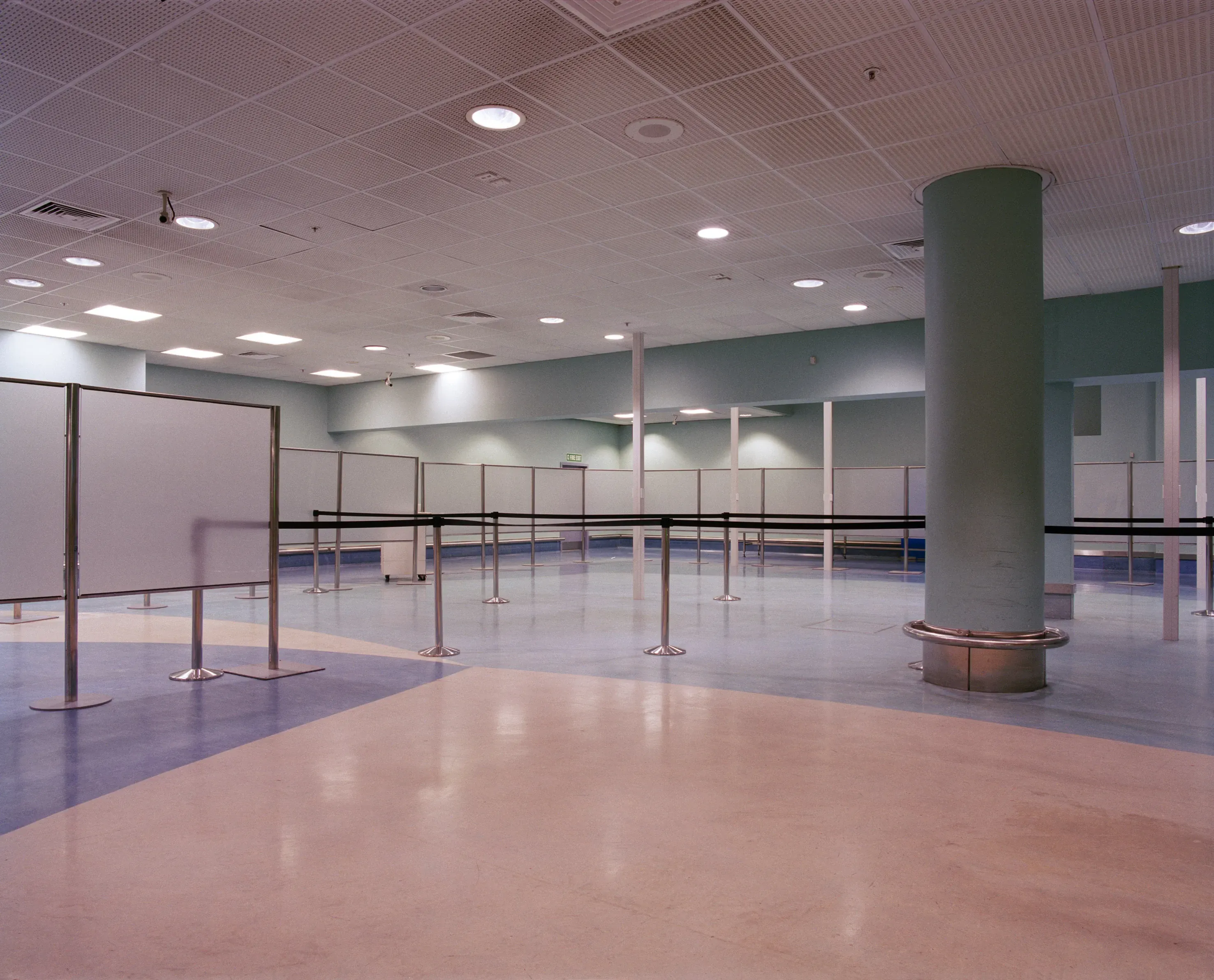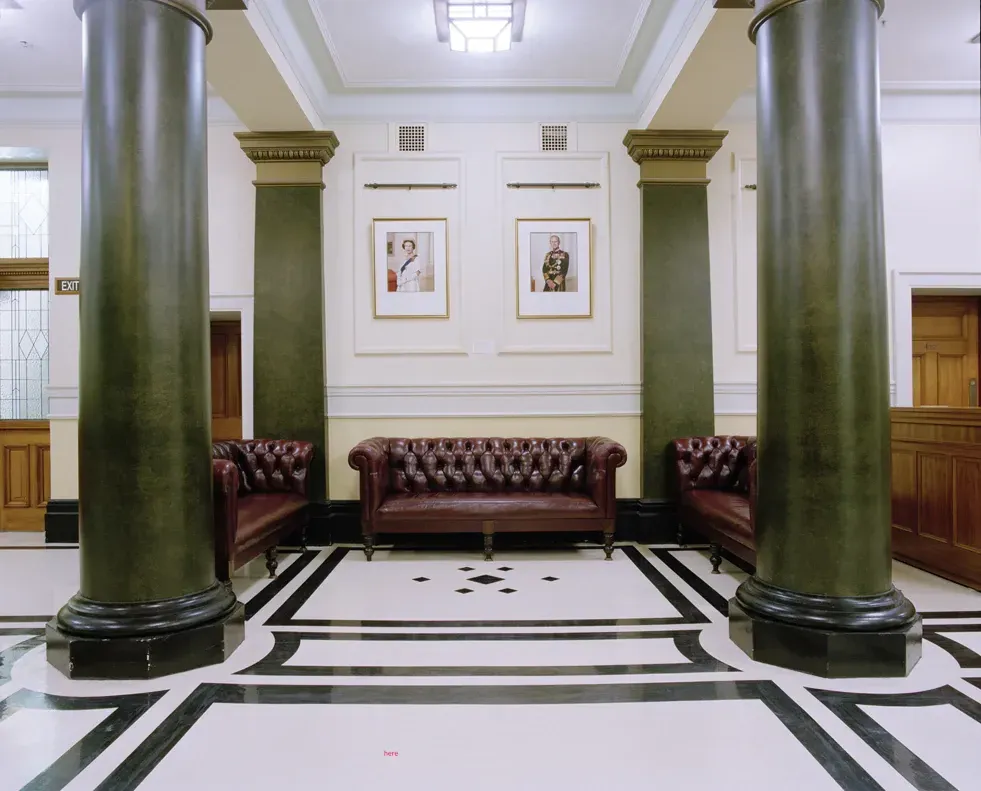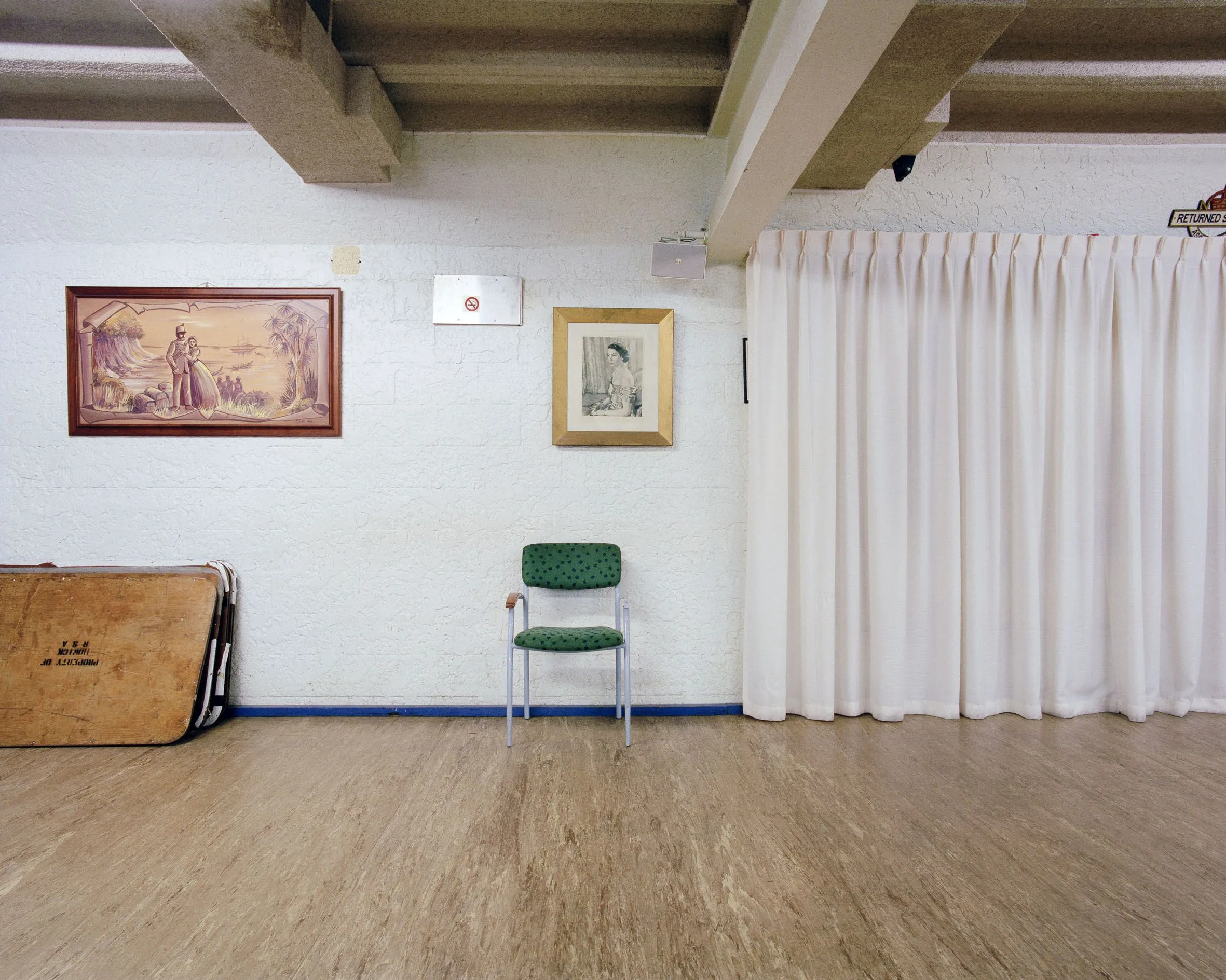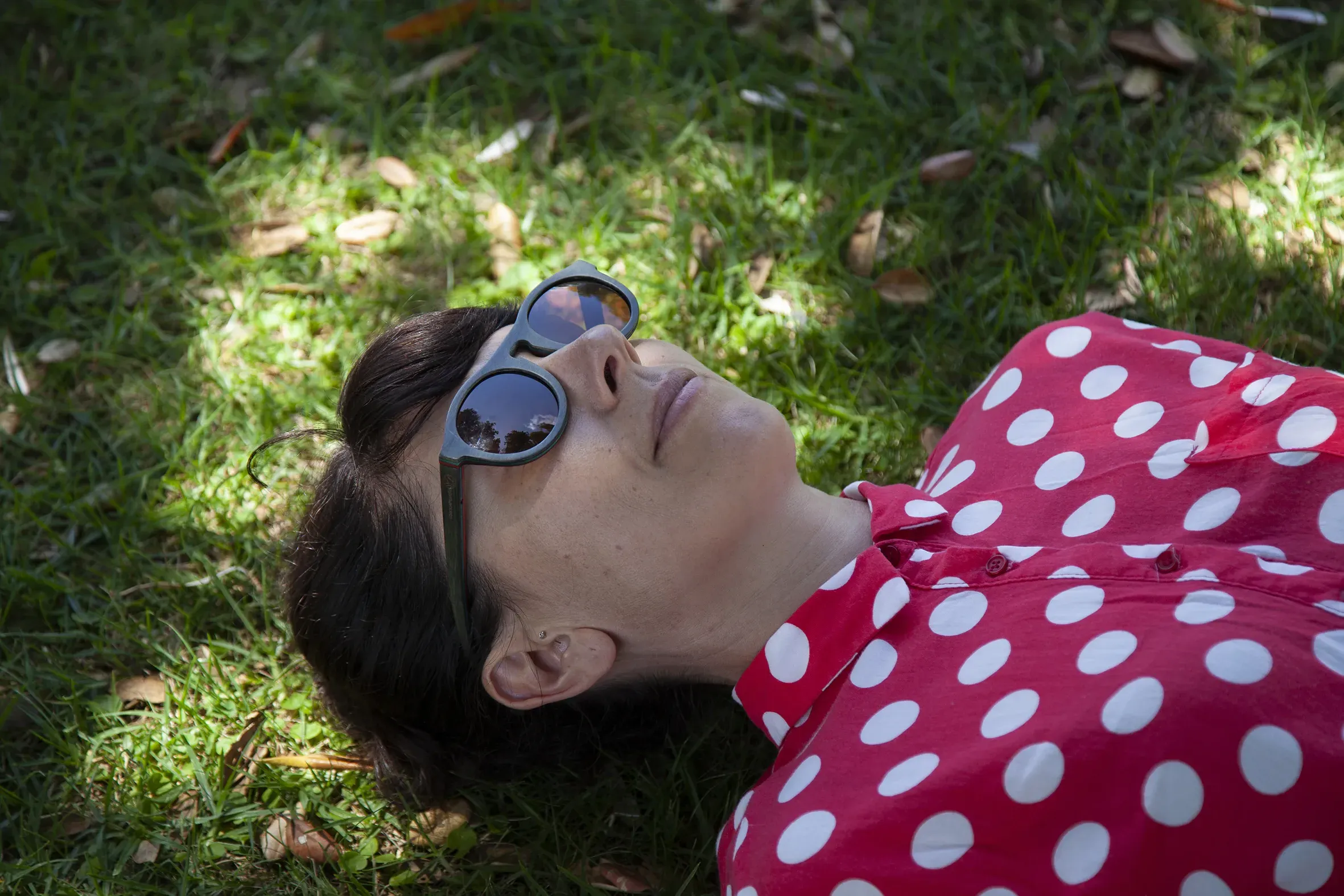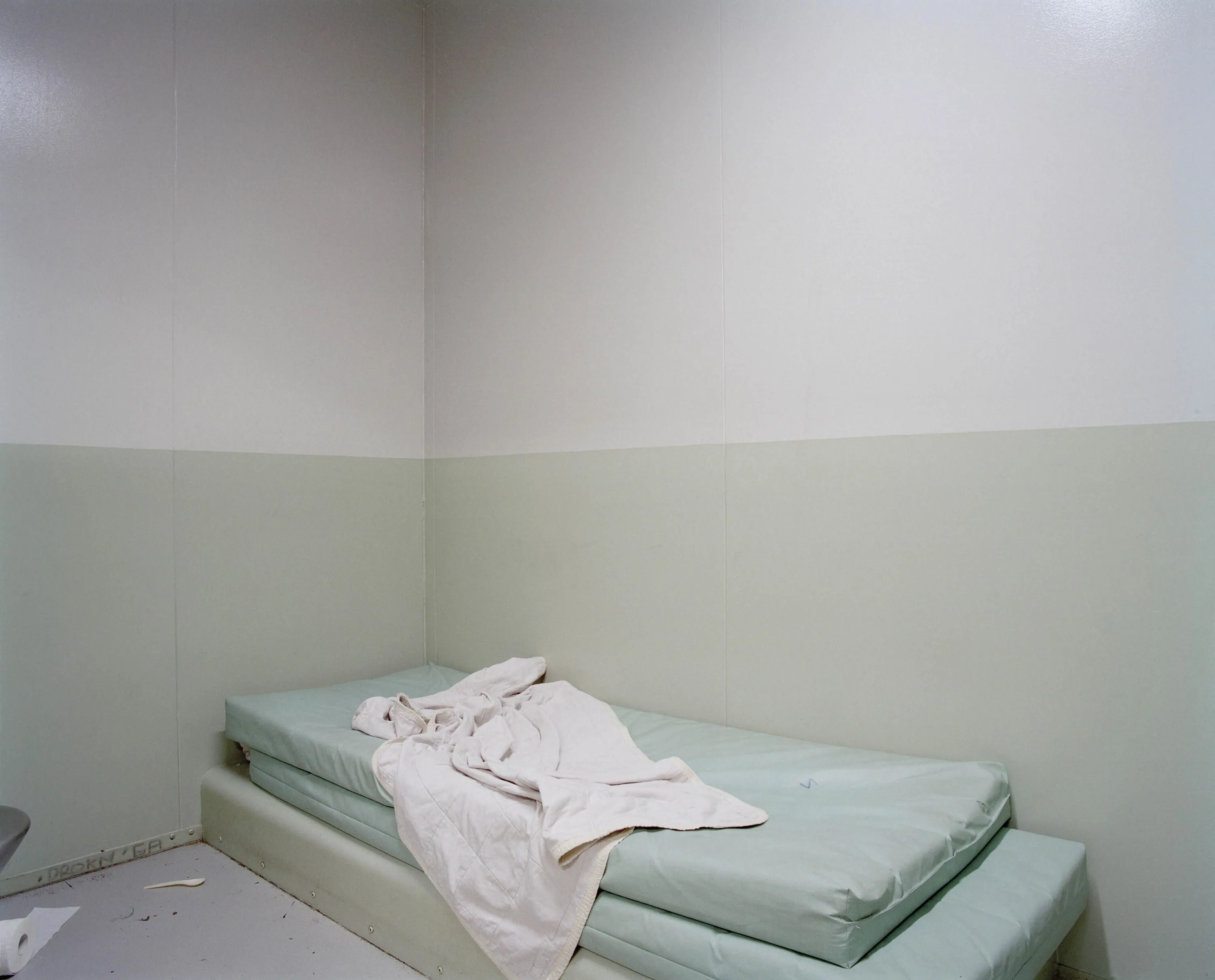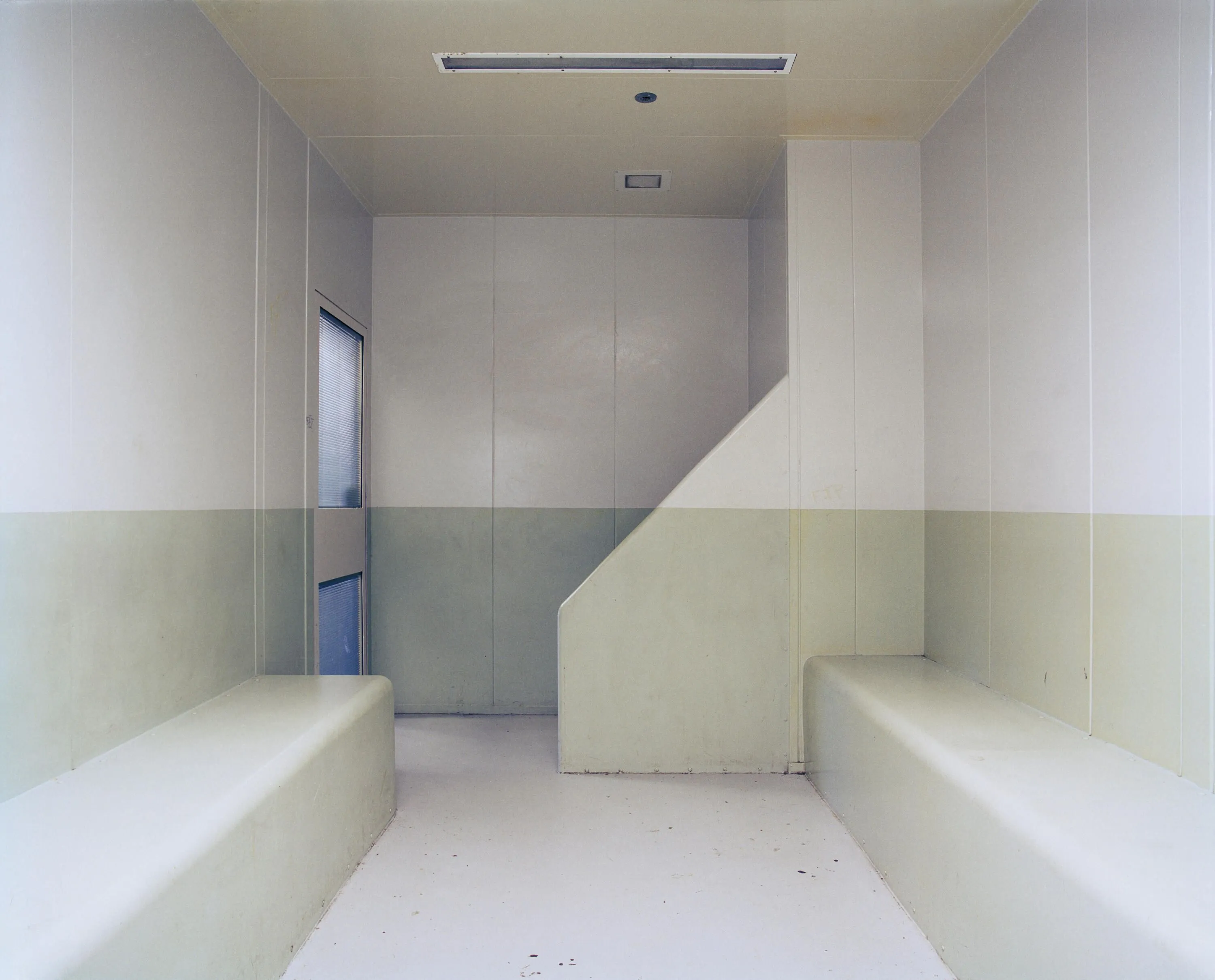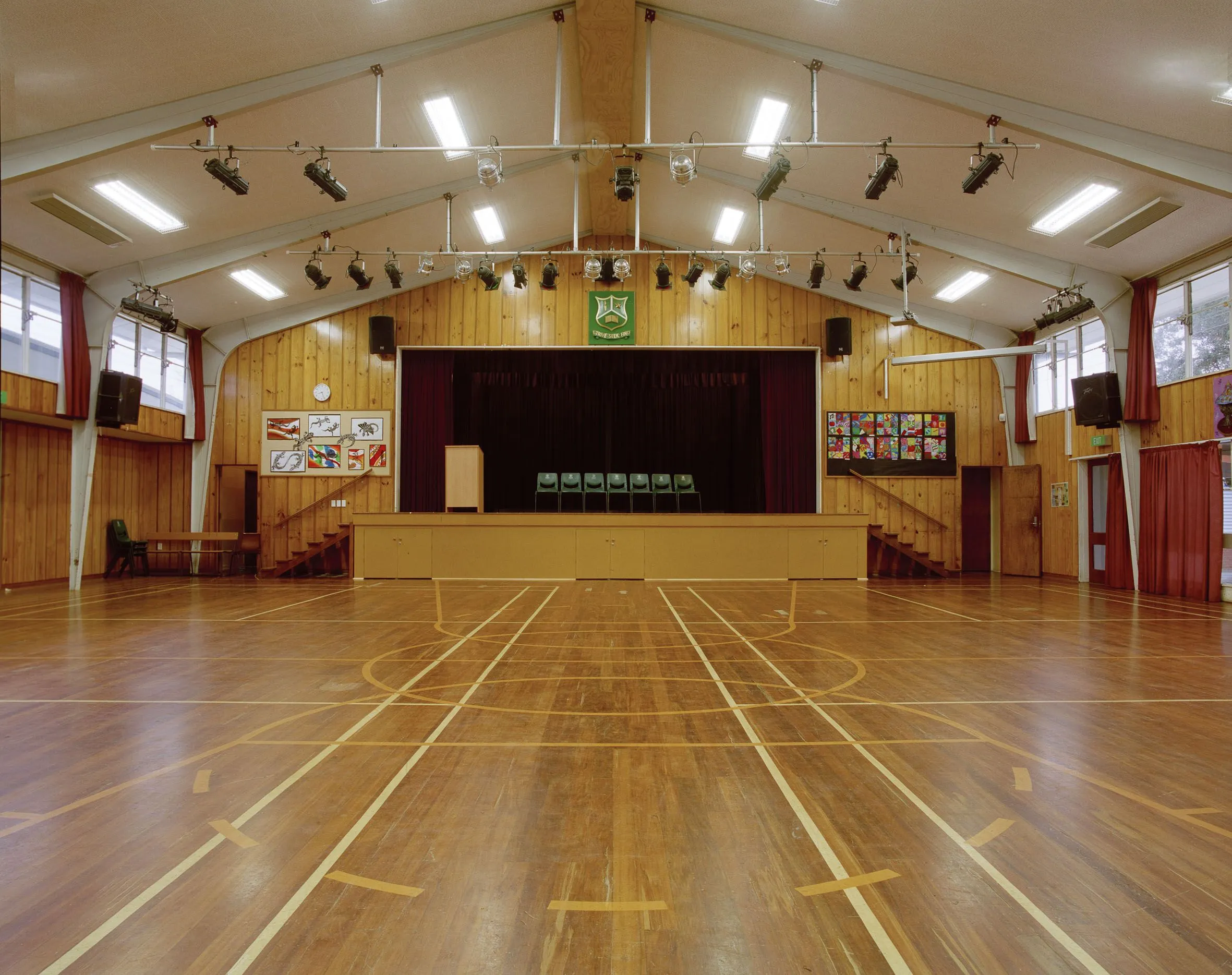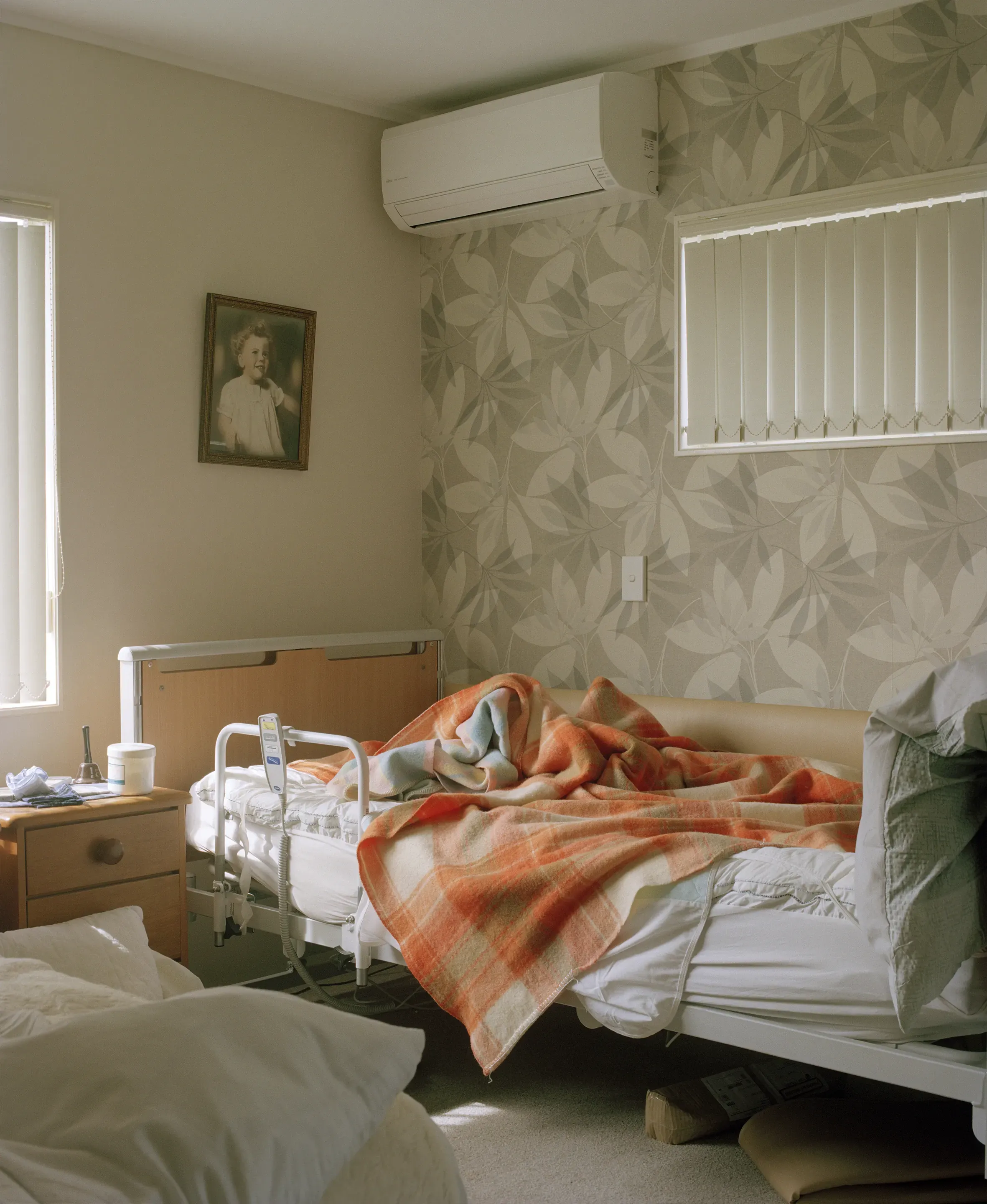Arousal of Emptiness
Written by
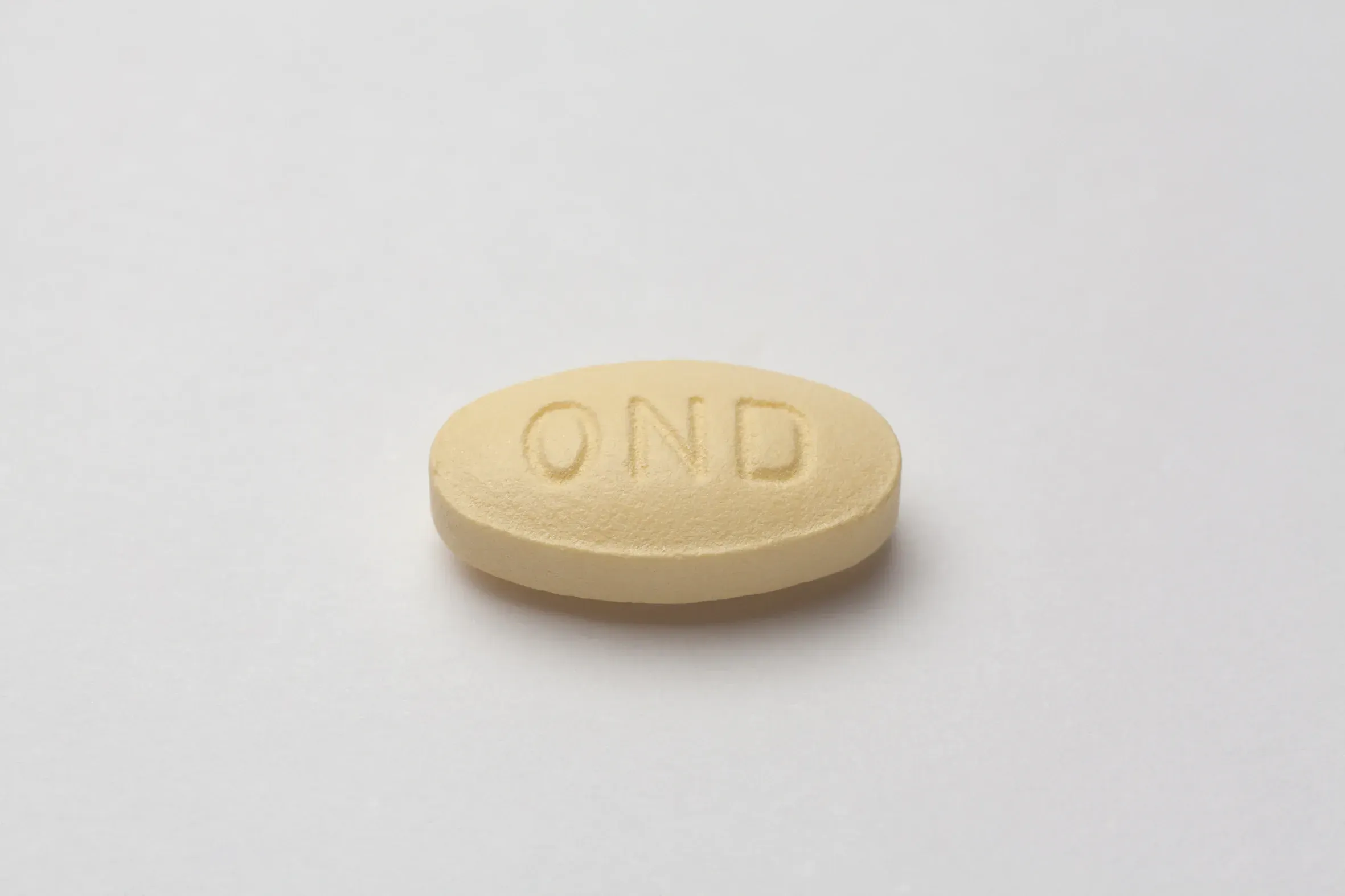
There is a perfect formal symmetry captured in the Mt Roskill school hall.
The superimposition of the indoor sporting markings matched according to the rules of perspective taking our gaze to the stage. A smartly positioned lectern to the right and a perfect line-up of green stackable chairs implies the context of a school assembly.
But there are no students or teachers in sight and how the narrative unfolds is not clear. There is no movement in this image, just a prevailing warmth of the well-lit wooden interior seized by a photograph.
Caryline Boreham is a master of repeated gesture, capturing the world sealed off from our presence, revealed out of its anonymity. The gesture of emptiness and capturing the missing is also one of place and time, shot in an instant.
There is no bustle in these images and the emptiness is ever so pleasing for the witness because of these effects. There is a difference between what we are watching and what we see. These images are refusing to allow us the timeline of everyday experiences, what they capture is the outline, a penumbra of the human narrative.
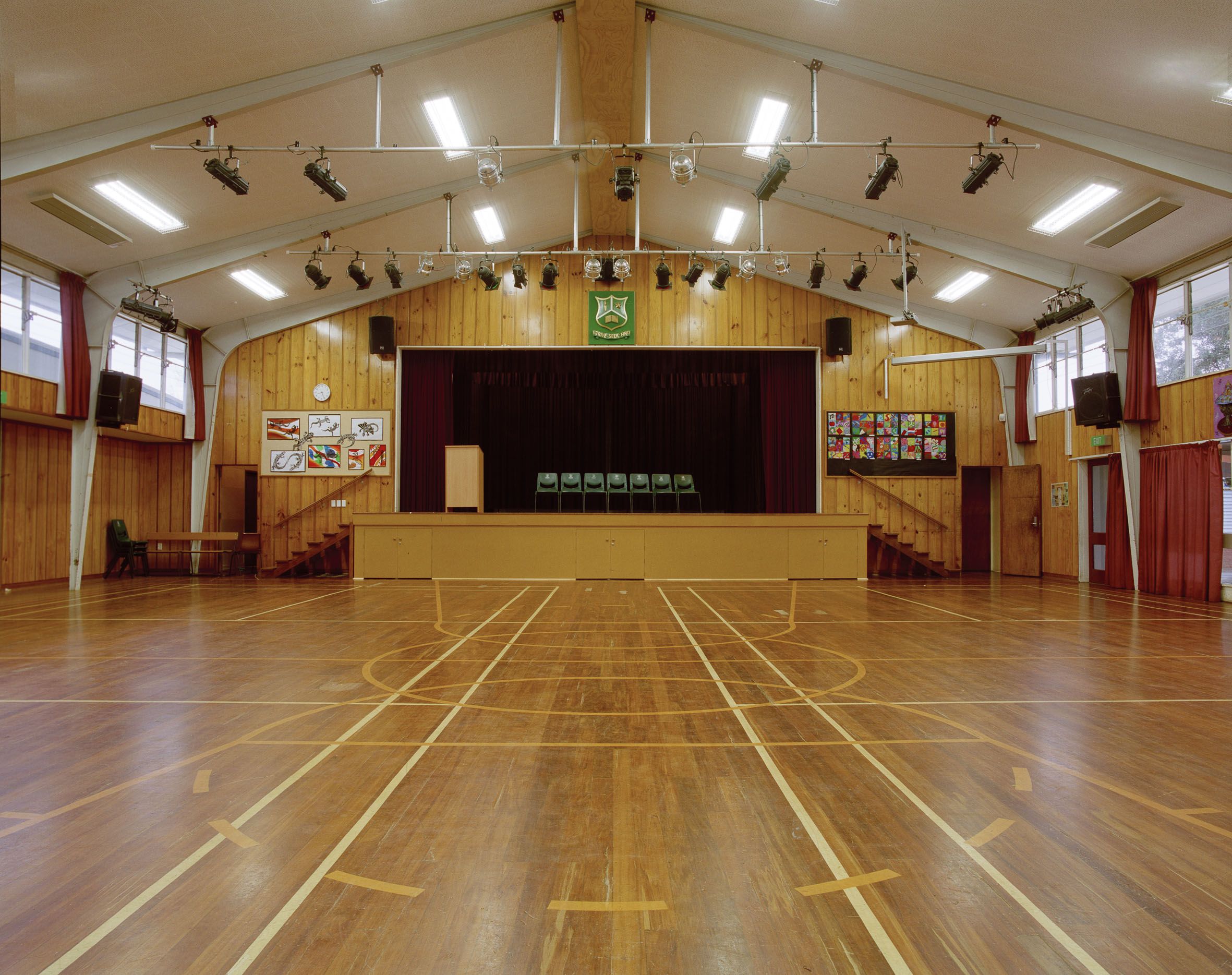
Mount Roskill Intermediate 2008. Photo: Caryline Boreham.
“In most of my work to date, humans are not present but always implied. In living through COVID-19, enforced social distancing has accentuated some of the readings of my work – how spaces dictate human interactions and how they make us perceive ourselves as a society. Collectively we are now much more able to resonate with spaces emptied of human presence.”
Who we were or who we are?
The relationship of history and how we interpret it in the present context is in constant flux. As we invite ourselves to contest with care and urgency, the image is always the past, never able to capture the complexity of our contemporary condition.
The Royal Tour series binds our shared history to the present, the images of the royals placed once upon a time with purpose and intent, to maintaining a position as a habit of the past arrested in a time of stasis and gentle rhythms of tea drinking RSAs.
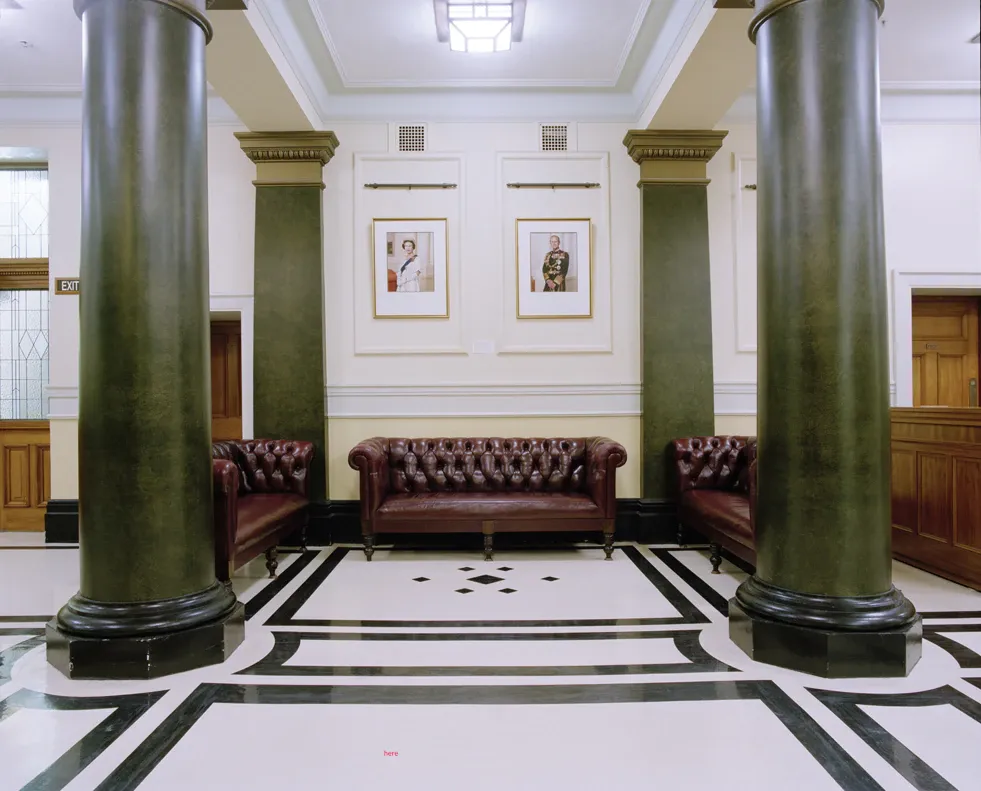
Queen Elizabeth II – Parliament Building, Wellington 2010. Photo: Caryline Boreham.
Boreham remarks “what drew me initially to the project was the nonsensicalness that comes with some of the traditions we keep – but this ceremonial obligation to display Queen portraits in these spaces is a marker to something much deeper; Royal Tour questions the Queen’s position as our Head of State and how Aotearoa could evolve as a country in the future.”
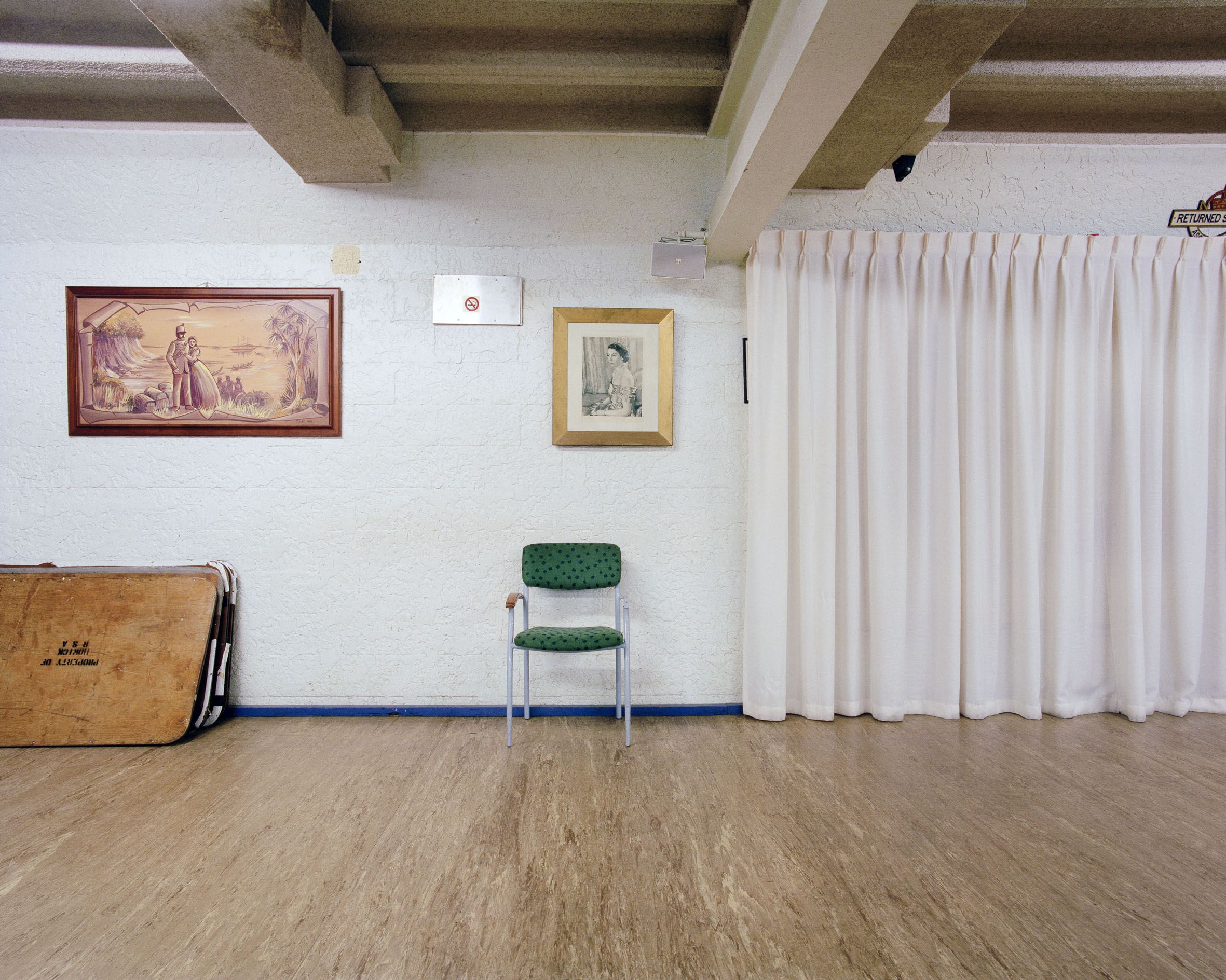
Queen Elizabeth II – Howick RSA Basement 2011. Photo: Caryline Boreham.
Unwelcoming voids
Nothing comes closer to the current social fabric unravel than the State Space series. So very intimate and equally uncomfortable, the Prisoner Processing Cell is peaceful and cold. The left corner reveals the very edge of the toilet bowl, so close to the stack of mattresses that only offer the possibility of unrest.
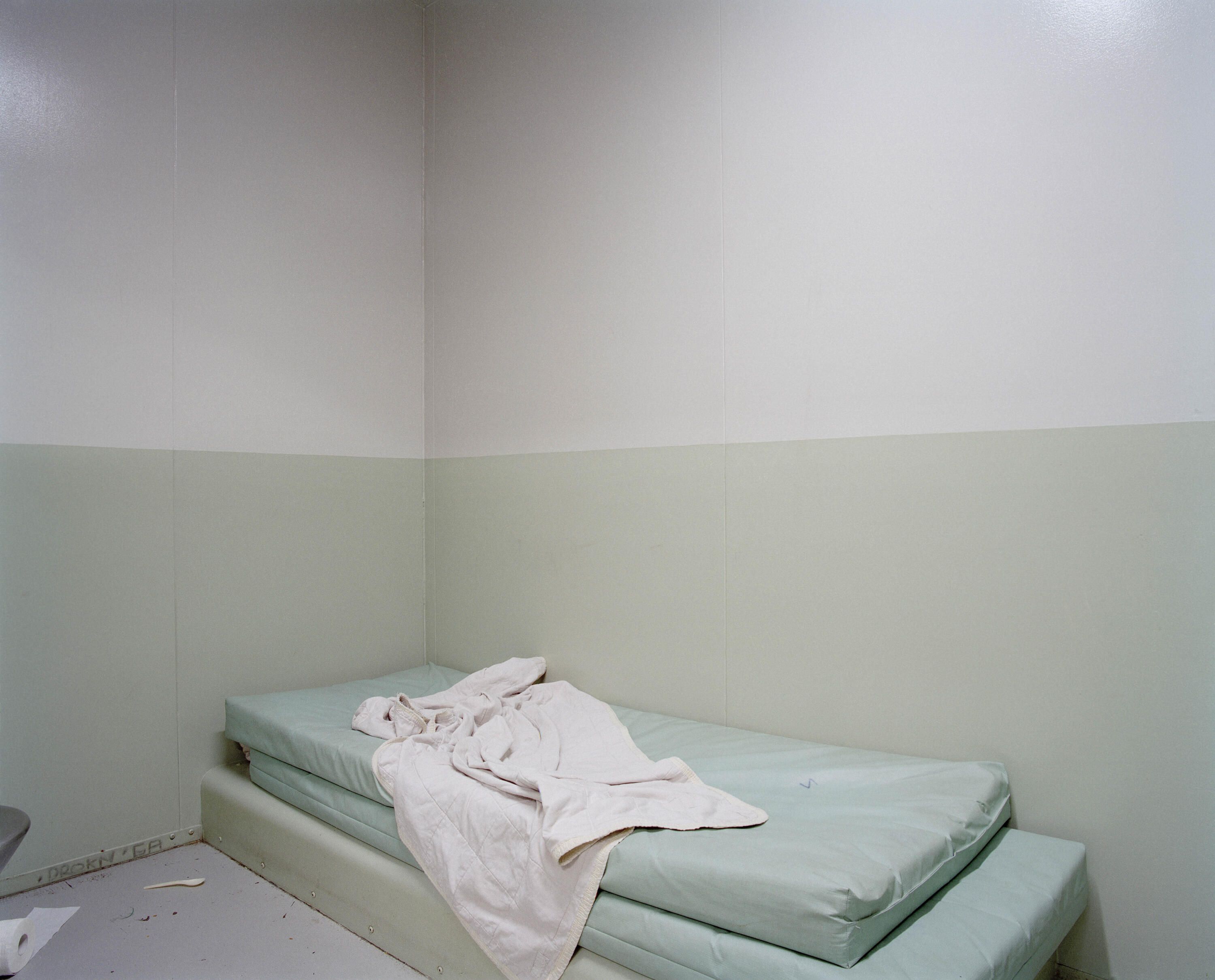
Manukau Police Custody – Holding Cell 3 – 2010. Photo: Caryline Boreham.
“When these interiors are photographed without people, the viewer’s interpretation fills the void based on architectural details and the clues of human interaction left behind. I have always been interested in how the conditions of a space can dictate interaction and affect the human psyche.”
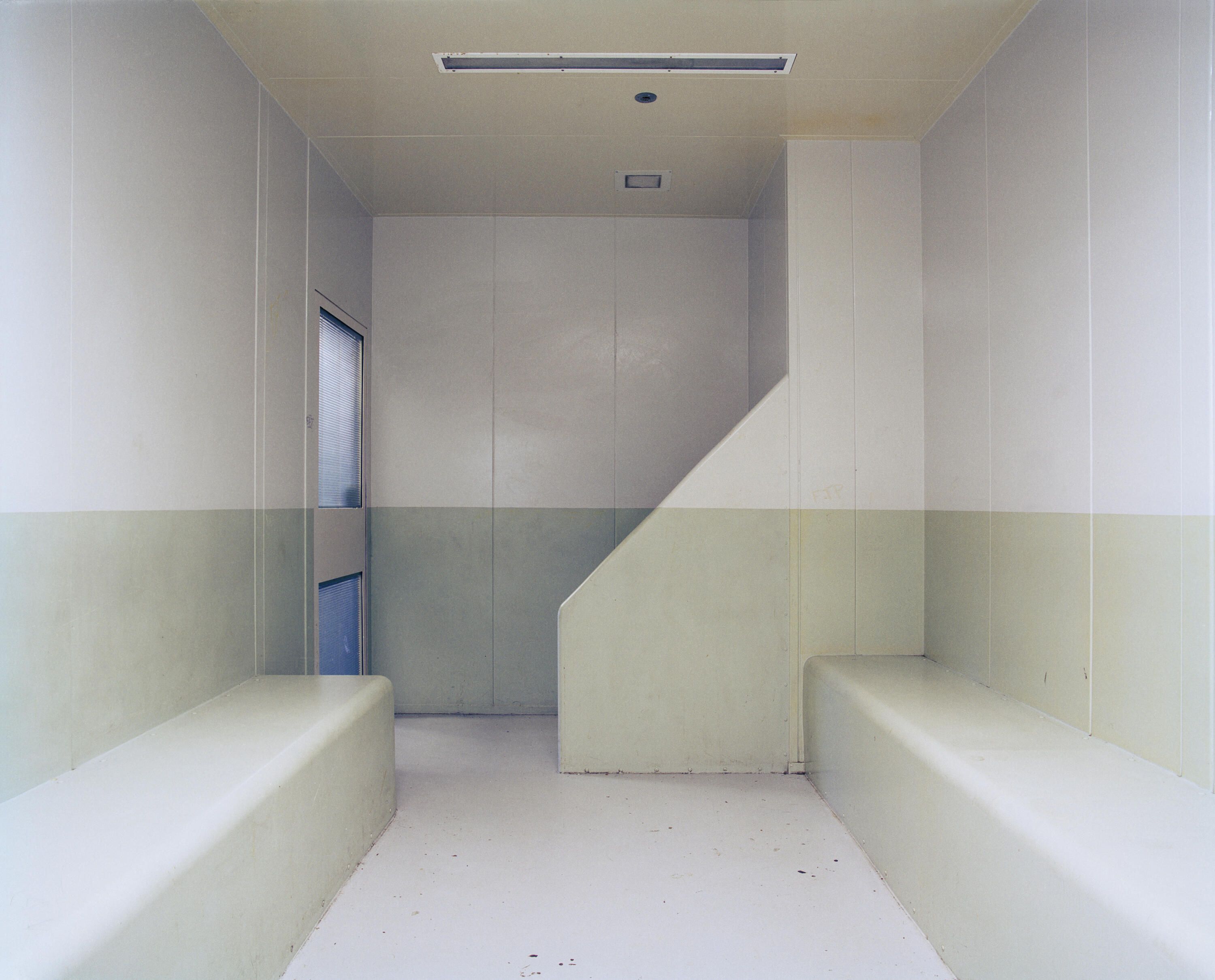
Prisoner Processing Cell 2010. Photo: Caryline Boreham.
Personal pain
The pill series, along with Lakeside Drive, are different and personal. These are extremely intimate histories of the figures outside the frames that suggest their proximity. Presented in this material flat image form, in the work of art, made so visible for our gaze, they are a series of moments and their passing. In more ways than one, these are a record of what once was and is no more, a melancholy aesthetic of loss. A frozen fluidity of sheets and blankets and an archive of quiet.
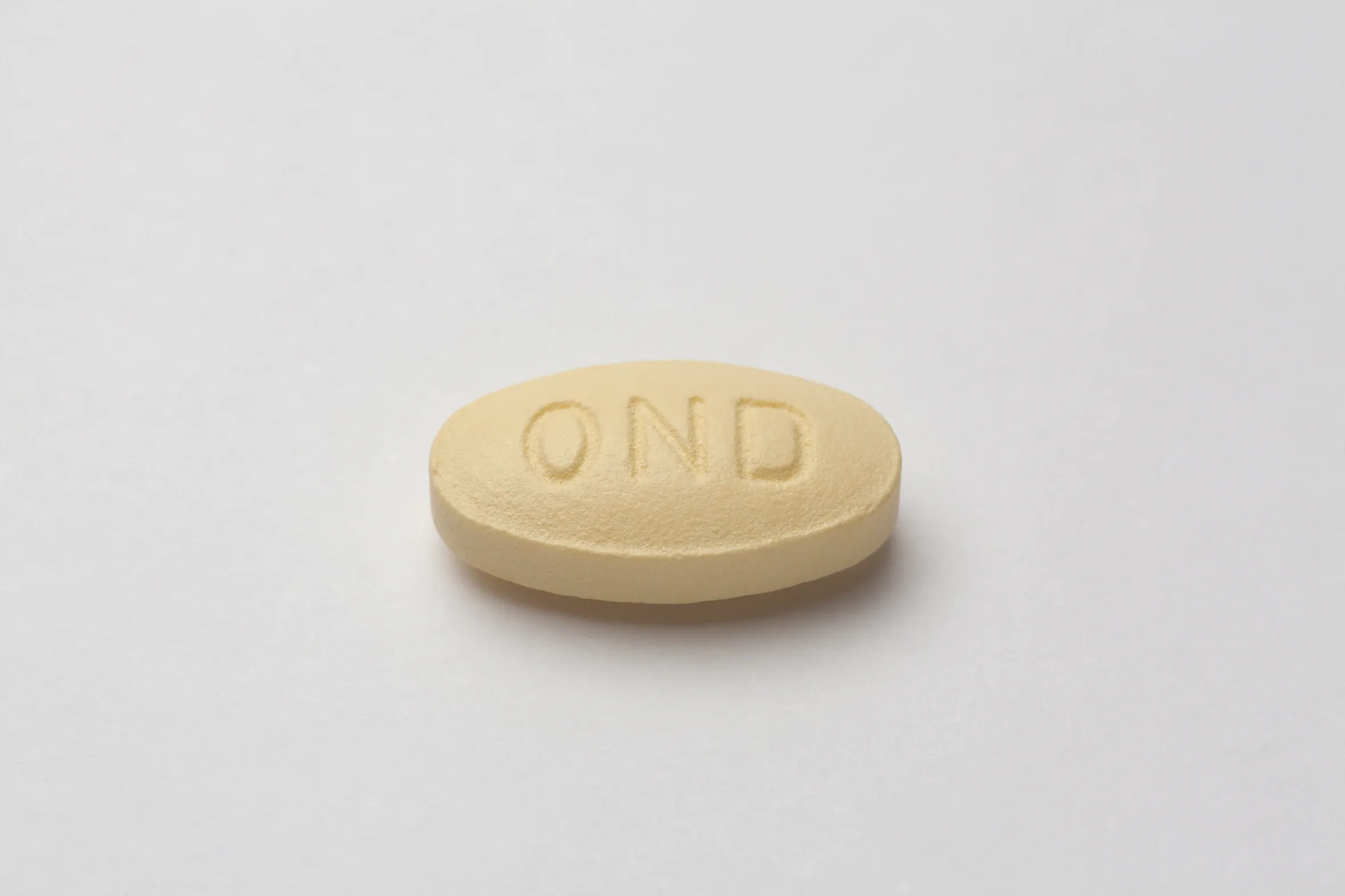
Ondansetron 2019. Photo: Caryline Boreham.
“What began as a documentary of the domestic space in relation to my father’s illness, became a wider investigation around the collective management of a debilitating disease – and my mother’s role as full-time carer and housekeeper,” Boreham explains. “My approach to this documentation has opened out my practice to include studio still life, as well as video and sound works – and working with such personal subject matter, and a space that I have unlimited access to, has given licence to be more exploratory in the way I develop my ideas.
]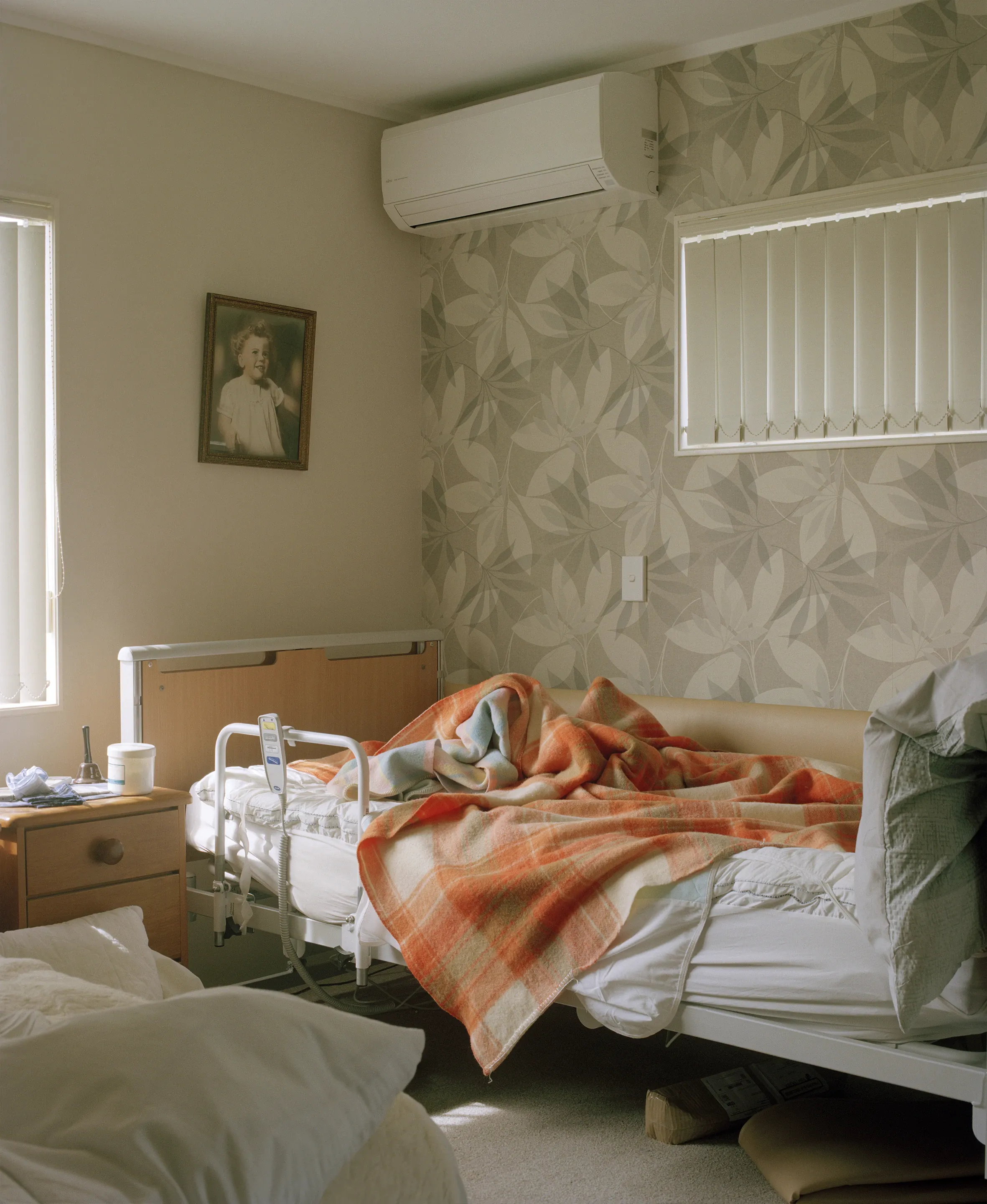
Lakeside Drive – Dad’s bed 2016. Photo: Caryline Boreham.
“Previously, I didn’t have any control over or close personal attachment to the spaces I was documenting, and, in many cases, I couldn’t begin to understand the depths of human trauma in some of these spaces.
“Lakeside Drive started as an observation around how much my parents’ house was transforming as my father’s illness progressed, and how they navigated these changes to their routine and physical space.”
Sign of the times
Like in the time of COVID-19 where our spaces outside were filled with space, Boreham’s images accomplish the same effect. By looking at them, we are performing an extraction of human form, giving ourselves space and time.
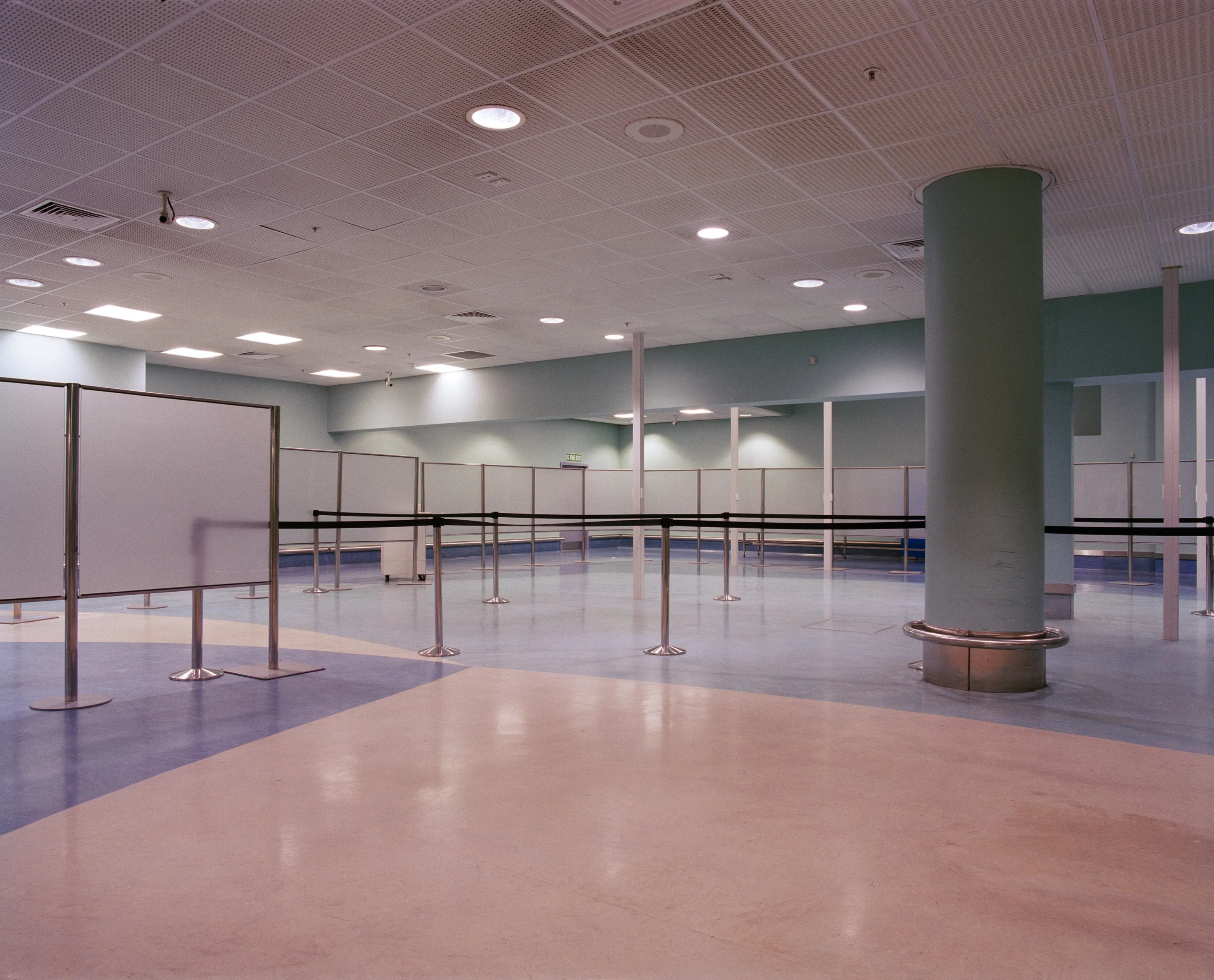
The MAF processing area at Auckland Airport. Photo: Caryline Boreham.
Boreham’s photography restores our vision of the panoramic and the microscopic. It gives us a focus into the events and places our brain is trained to erase and ignore. It allows us pause to look at the spaces we inhabit and give it form that is not centred on our presence. Through these formless images, we gain the pattern and texture of our everyday. They accumulate like a new memory that embody the unconscious historical experience that give us meaning in the present. The world worthy of our presence, and our living contact with the unfinished and the immediate. The arousal of emptiness.
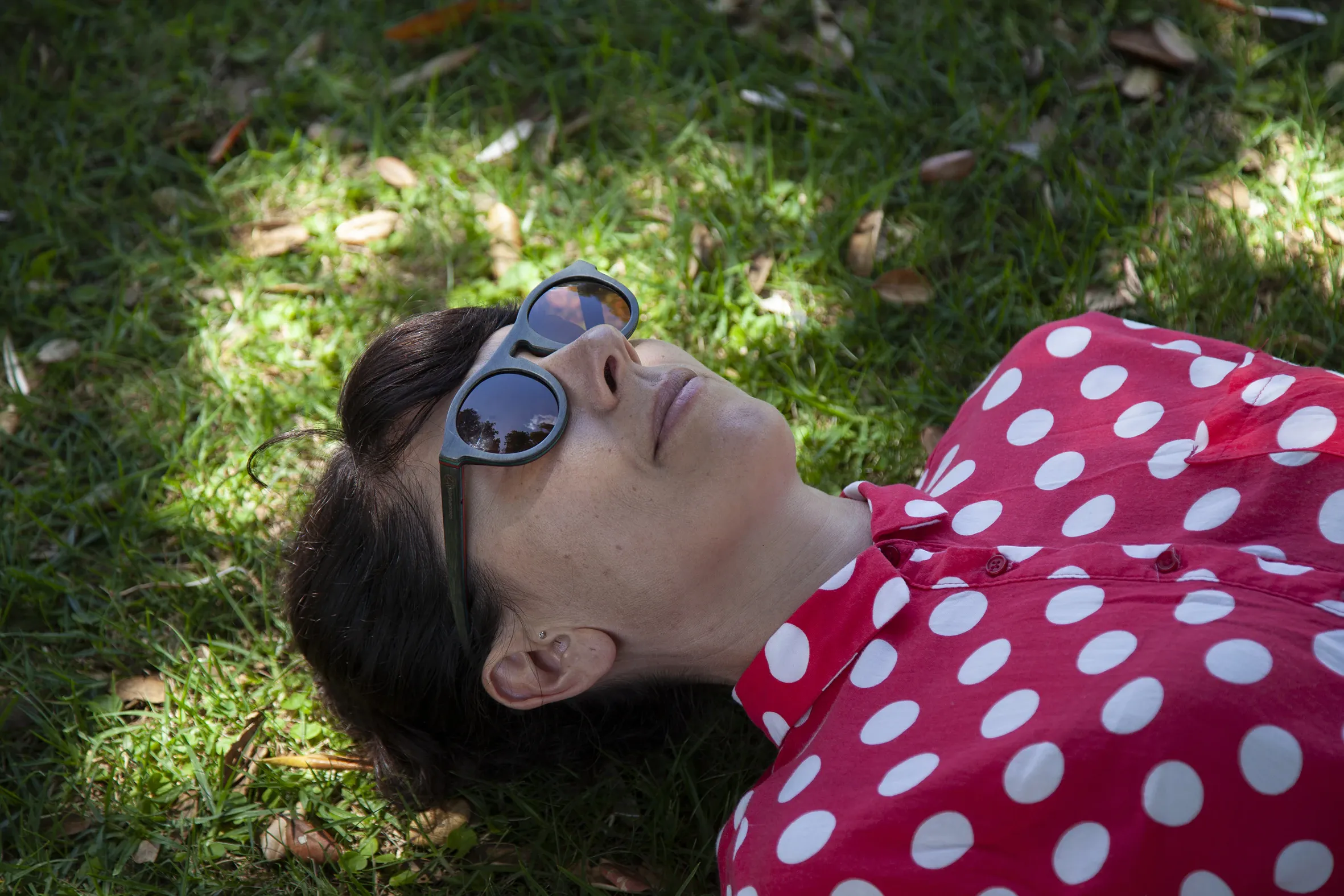
Caryline Boreham.
